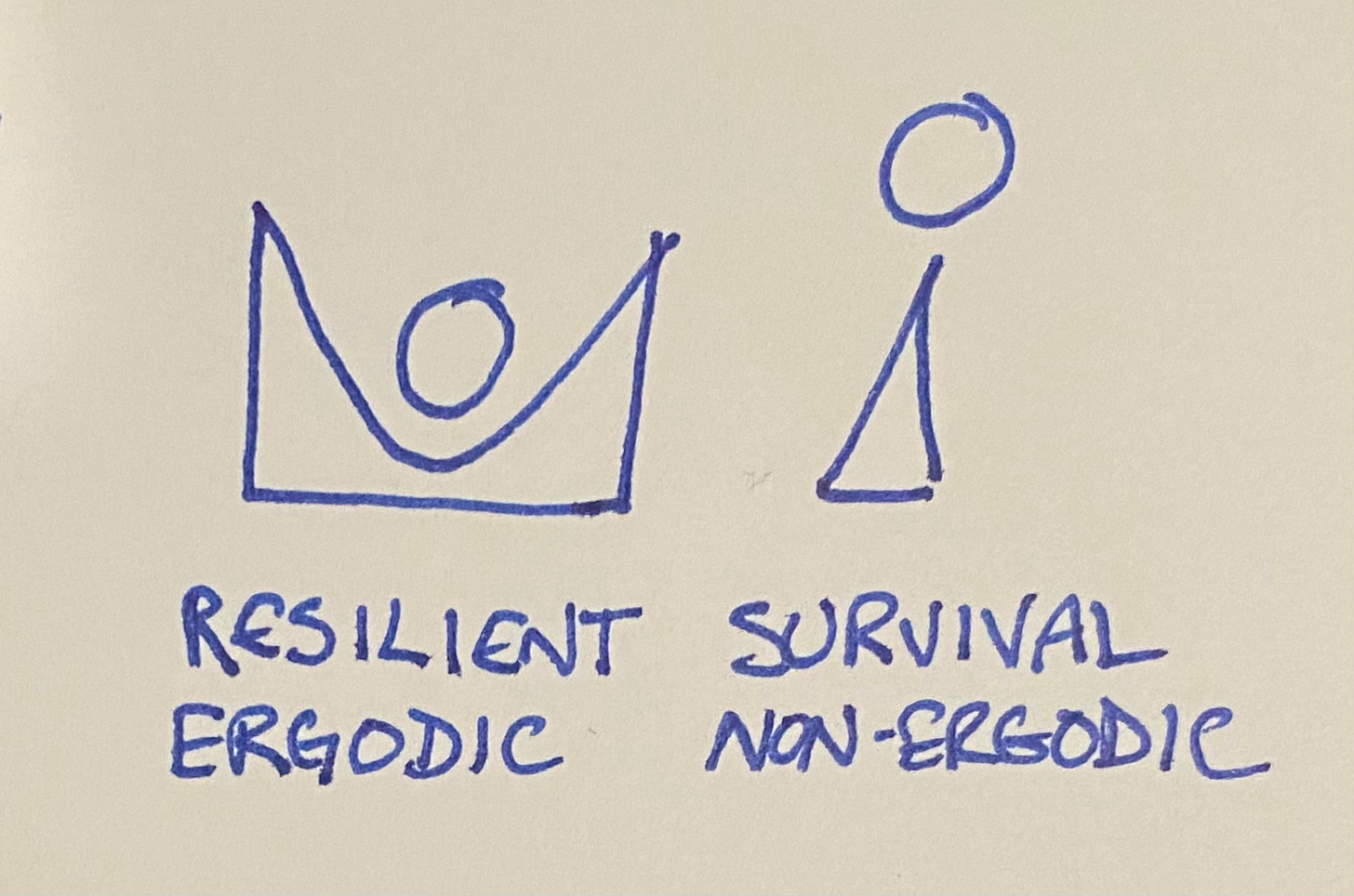Ergodic: Good Thinkie, Awful Name
AI for medicine is good, right? Brings better care to more people. Maybe, maybe not. Here’s my application of a new Thinkie: ergodicity.
The Pattern
1000 people play Russian Roulette once. 167-ish die, 833-ish live.
1 person plays Russian Roulette 1000 times. They die. 100%. (Okay, 6.5880055e-80 chance of surviving. Not going to bank on that.)
The outcome for an individual is different than the outcome for a population. Note that distinction. It will become important.
Thinkies
Thinkies are mental habits that occasionally result in thoughts that other judge “creative”. (I definitely need to write/teach more about Thinkies.) I get excited when I find a new one because by now new Thinkies are rare.
I collect & study Thinkies because, well, it’s complicated but basically I think more people could be more creative. I’m also obsessively self-reflective.
Each Thinkie starts with a pattern. For example, the “Obviously” Thinkie says that when you hear someone start a sentence with “Obviously…” you immediately ask yourself, “What if the opposite is true?” In true Thinkie fashion, mostly the person is right & nothing comes of asking the Thinkie question. When you discover that the opposite really is true, that’s a rare & valuable (& “creative”) moment.
AI Improves Care For Most
I was talking with someone from a large medical organization. The organization had a project going to use large language models to summarize patient histories. The intention is to save practitioner time & highlight salient information. Reduce the usage of a scarce resource, increase quality, everybody wins.
Not everybody. In rare cases it is an obscure, not-clearly-relevent bit of information that offers the hint to effective treatment. The automated summarizer is going to degrade care for the unlucky few.
🛎️ that’s the ergodic pattern—population outcome doesn’t match individual outcome. Now, I wish this had led me to some magical solution to all of America’s health care ills but it didn’t. The ergodic pattern is to transform some of the irreversible cost to the reversible part of the population. Not sure how to do that for diagnosis & treatment.
Ergodicity in a Nutshell
I can’t just leave you my fellow geeks with no explanation of ergodicity. First, the name doesn’t help. Distinguish between different kinds of systems. In some systems, a failure is a temporary problem. You adapt. The system comes back to homeostasis. In other systems, failure is game over.
Treat these two kinds of systems very differently. Resilient systems, those that bounce back (ergodic) require maintenance, monitoring, & care, but also you’re able to experiment freely. Survival systems, those where failure precludes future operation (non-ergodic—see what a useless name that is?), should be approached conservatively. If possible, as noted above, transfer some of the survival risk to the resilient parts of the system.
The financial impact of a family losing an income because of the death of an earner is huge. The consequences can play out for generations. The economic impact to society of the death of one earner is negligible. Life insurance transfers the financial survival risk from a single family to all of society. (Remember “impact on the individual doesn’t match impact on the population”?)
(I read Ergodicity by
which finally gave me enough repetitions with the vocabulary that I could finally remember which was which. The name is still an unnecessary impediment. I highly recommend the book.)

Thank you Kent for the mention and the nice words about my book!
Here is a long thread in HL7 community triggered by this post - https://chat.fhir.org/#narrow/stream/179160-social/topic/Ergodic.3A.20Good.20Thinkie.2C.20Awful.20Name.20by.20Kent.20Beck